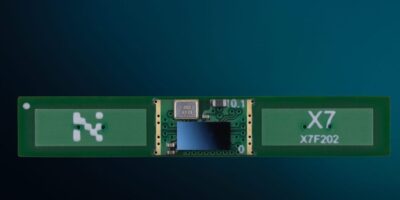NOVELDA adds seat occupancy detection capability to its X7 ultra-wideband in-cabin sensor
NOVELDA, has announced it will demonstrate the new multi-target seat occupancy detection function of its NOVELDA X7 UWB In-Cabin Sensor at Embedded World 2024. NOVELDA’s X7 radar chip is already capable of performing the world´s lowest power presence detection, child presence detection (CPD) and vital signs monitoring. X7 now adds seat occupancy detection capability through a software upgrade. A single UWB sensor can detect human presence in each seat within the car cabin..
The In-Cabin Sensor has the potential to fulfil multiple use cases with a single X7 system-on-chip (SoC), including ultra-low power presence and intrusion detection, child presence detection, seat occupancy detection, vital signs monitoring and gesture recognition. In addition to preventing pediatric heatstroke, NOVELDA’s solution may serve further lifesaving applications by detecting car crash survivors through its heartbeat detection functionality. X7, with a field of view (FoV) of nearly 180 degrees, allows companies to dramatically reduce the number of sensors in the vehicle, providing significant cost savings compared to other solutions, including 60GHz radar.
Unlike traditional weight sensors, NOVELDA’s seat occupancy solution differentiates between people and objects, preventing false seat belt alarms due to objects placed in seats. The solution achieves this by sensing a person’s tiny motions, including breathing and heartbeat, even if a person is motionless or there is a baby in the seat.
UWB frequencies also enable simpler mechanical integration than competing in-cabin sensing radars because UWB can sense through car seats and other materials through centimeter wavelengths.




